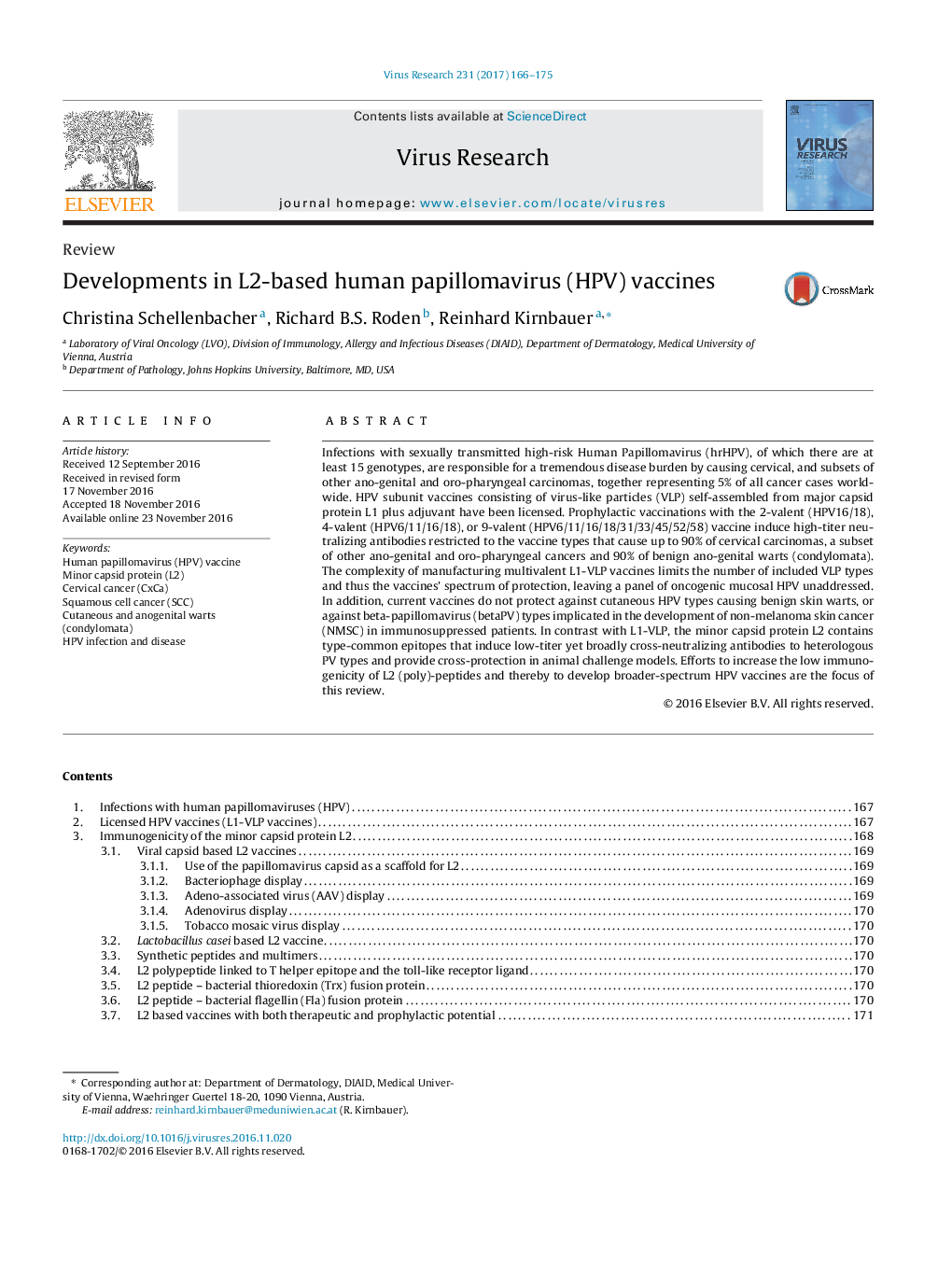| Article ID | Journal | Published Year | Pages | File Type |
|---|---|---|---|---|
| 5675597 | Virus Research | 2017 | 10 Pages |
Abstract
Infections with sexually transmitted high-risk Human Papillomavirus (hrHPV), of which there are at least 15 genotypes, are responsible for a tremendous disease burden by causing cervical, and subsets of other ano-genital and oro-pharyngeal carcinomas, together representing 5% of all cancer cases worldwide. HPV subunit vaccines consisting of virus-like particles (VLP) self-assembled from major capsid protein L1 plus adjuvant have been licensed. Prophylactic vaccinations with the 2-valent (HPV16/18), 4-valent (HPV6/11/16/18), or 9-valent (HPV6/11/16/18/31/33/45/52/58) vaccine induce high-titer neutralizing antibodies restricted to the vaccine types that cause up to 90% of cervical carcinomas, a subset of other ano-genital and oro-pharyngeal cancers and 90% of benign ano-genital warts (condylomata). The complexity of manufacturing multivalent L1-VLP vaccines limits the number of included VLP types and thus the vaccines' spectrum of protection, leaving a panel of oncogenic mucosal HPV unaddressed. In addition, current vaccines do not protect against cutaneous HPV types causing benign skin warts, or against beta-papillomavirus (betaPV) types implicated in the development of non-melanoma skin cancer (NMSC) in immunosuppressed patients. In contrast with L1-VLP, the minor capsid protein L2 contains type-common epitopes that induce low-titer yet broadly cross-neutralizing antibodies to heterologous PV types and provide cross-protection in animal challenge models. Efforts to increase the low immunogenicity of L2 (poly)-peptides and thereby to develop broader-spectrum HPV vaccines are the focus of this review.
Keywords
Related Topics
Life Sciences
Immunology and Microbiology
Virology
Authors
Christina Schellenbacher, Richard B.S. Roden, Reinhard Kirnbauer,
